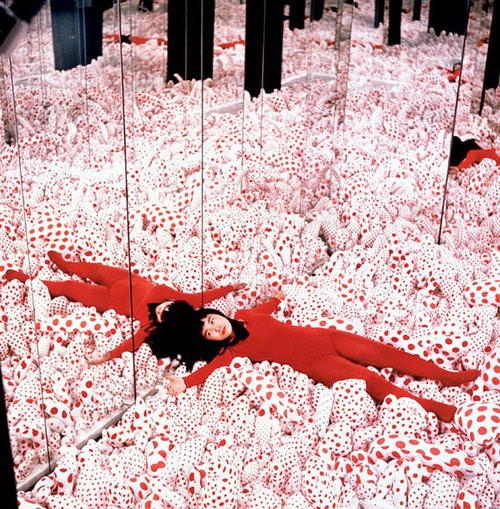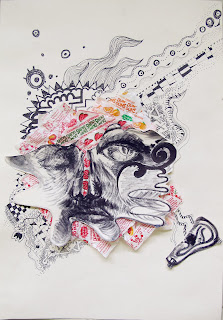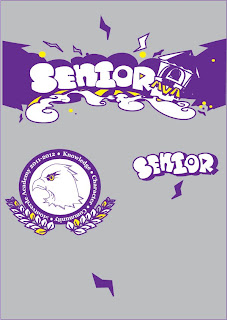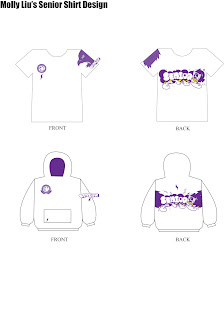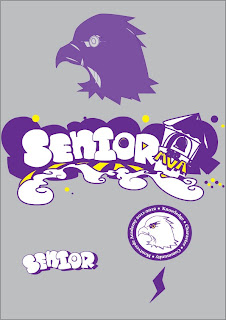Yayoi Kusama( 草間 彌生)
"Born in Matsumoto, Nagano into an upper middle class family, Kusama started creating art at an early age, going on to study Nihonga painting in Kyoto in 1948. Frustrated with this distinctly Japanese style, she became interested in the European and American avant-garde, staging several solo exhibitions of her paintings in Matsumoto and Tokyo during the 1950s. In 1957 she moved to the United States, settling down in New York City
where she produced a series of paintings influenced by the abstract expressionist movement. Switching to sculpture and installation as her primary mediums, Kusama became a fixture of the New York avant-garde, having her works exhibited alongside the likes of Andy Warhol, Claes Oldenburg and George Segal during the early 1960s, where she was often associated with the pop art movement. Embracing the rise of the hippie counterculture of the late 1960s, Kusama came to public attention after she organized a series of Body Festivals in which naked participants were painted with brightly colored polka dots.
In 1973, Kusama moved back to her native Japan, where she found the art scene far mo
re conservative than that in New York. Becoming an art dealer, her business folded after several years, and after experiencing psychiatric problems, in 1977 she voluntarily admitted herself to a hospital, where she has spent the rest of her life. From here, she continued to produce artworks in a variety of mediums, as well as launching a literary
career by publishing several novels, a poetry collection and an autobiography.
Kusama's work is based in conceptual art and shows some attributes of feminism, minimalism, surrealism, Art Brut, pop art, and abstract expressionism, and is infused with autobiographical, psychological, and sexual content. Kusama is also a published novelist and poet, and has created notable work in film and fashion design. Major retrospectives of her work have been held at theMuseum of Modern Art and Tate Modern, whilst in 2008 Christies New York sold a work by her for $5.1 million, a record for a living female artist."

